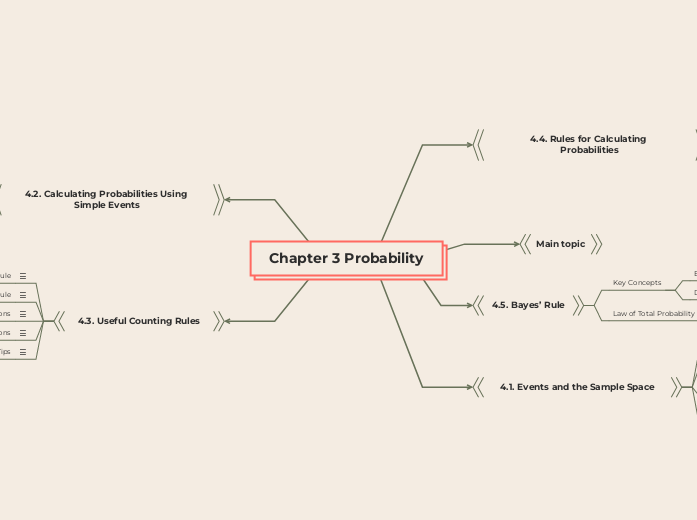jonka Farha Azam ali shah 1 vuosi sitten
205
Chapter 3 Probability

jonka Farha Azam ali shah 1 vuosi sitten
205

Lisää tämän kaltaisia
Definition: Selections of objects without regard to order. Formula: 𝐶𝑟𝑛=𝑛!𝑟!(𝑛−𝑟)!
Relation to Permutations: 𝐶𝑟𝑛=𝑃𝑟𝑛/𝑟!
Definition: Orderings of objects. Formula: 𝑃𝑟𝑛=𝑛!(𝑛−𝑟)!
Definition: For k-stage experiments with 𝑛1,𝑛2,...,𝑛𝑘 outcomes, total outcomes = 𝑛1×𝑛2×...×𝑛𝑘
Definition: For two-stage experiments, with m outcomes in the first stage and n in the second, total outcomes = mn.
When dealing with large sample spaces, use counting rules to identify and list all simple events accurately.
Each probability must lie between 0 and 1.
Sum of probabilities for all simple events in sample space 𝑆 must equal 1.
Venn Diagram
Definition: Collection of simple events.
Definition: The set of all simple events.
Definition: Two events are mutually exclusive if, when one event occurs, the other cannot, and vice versa.
Definition: Outcome observed on a single repetition of an experiment.
Definition: Process by which an observation or measurement is obtained.
A=(A∩B)∪(A∩Bc)
𝑃(𝐴)=𝑃(𝐴∩𝐵)+𝑃(𝐴∩𝐵𝑐)
Definition: Collection of simple events common to A, B, and C.
Definition: Set of simple events in A, B, or C or any combination of them.
Definition: Event that A does not occur.
Venn Diagram: Shaded area includes everything outside of A.
Definition: Event that either A, B, or both occur.
Venn Diagram: Shaded area includes all of A and B.